Will A “Christmas Star” Adorn The Sky This Year?
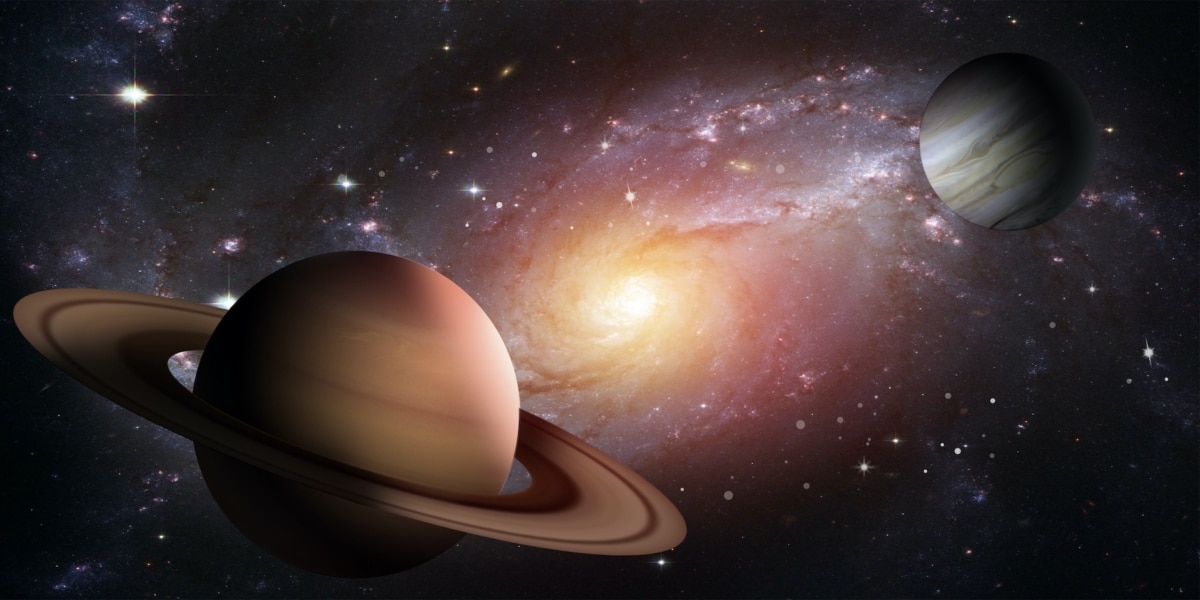
Not necessarily a Christmas Star, but more of a “Holiday Ornament” will appear exactly three weeks before Christmas 2024. On the evening of December 4, just after sunset, look low in the southwest sky to see Venus hovering above a slender crescent Moon. Read on to learn about Christmas stars from previous years, especially a rare event in 2020 that some people believe mimicked what the Three Wise Men saw as the “Star of Bethlehem.”
Previous Christmas Stars
2023 Christmas Star
Last year’s Christmas star wasn’t a star—it’s was a planet! Those who looked east before sunrise on December 25, 2023 saw Venus glowing brilliantly. And later that night, a nearly full Christmas Moon lit up the winter sky.
2022 Christmas Star
In 2022, there was a striking celestial event on Christmas Eve. The planets Venus and Mercury hung together—along with a gorgeous crescent Moon—just after sunset. We called it the “Christmas Eve Trinity.”
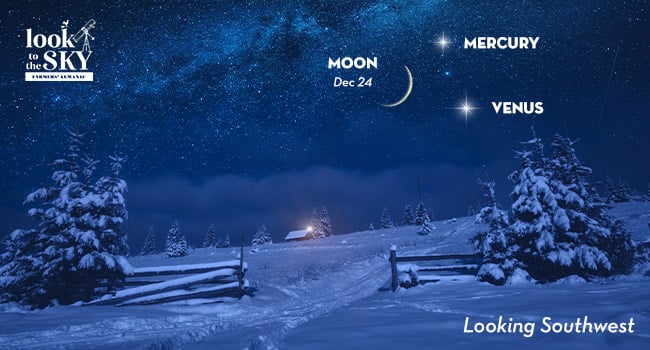
2020 Christmas Stars
In December 2020, there was a “Great Conjunction” of Jupiter and Saturn that occurred a few days before Christmas. The bright planets were so close together that they appeared to be one dazzling star. We dubbed it the “Christmas Star.” What makes this astronomical occurrence even more special is that it shows you one of the theories attributed to the “Star of Bethlehem” story.
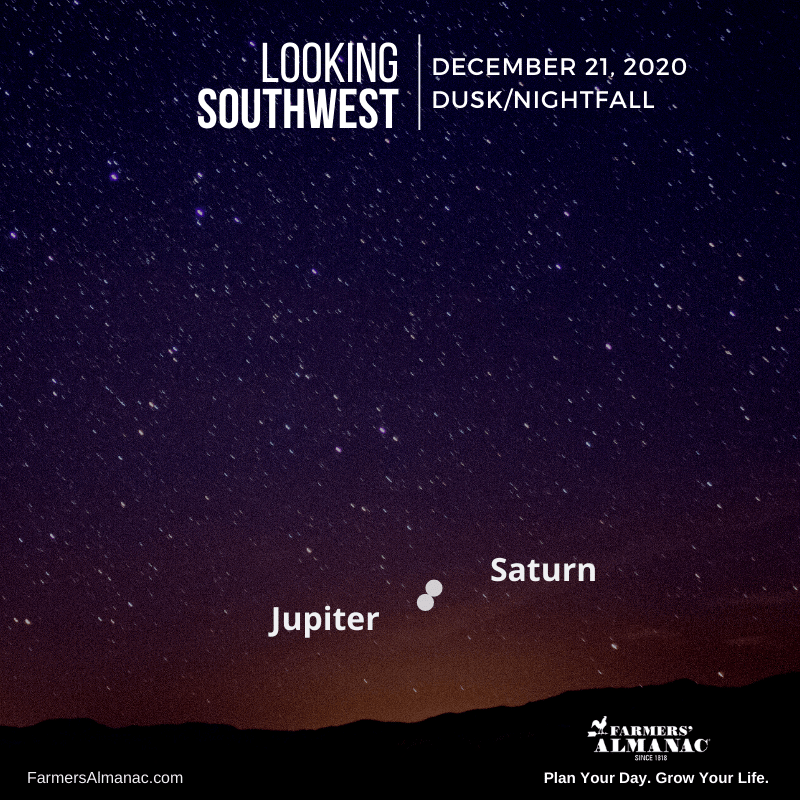
On the evening of December 21, 2020, 45 minutes after sunset (local time), Jupiter appeared to the lower left of Saturn near the southwest horizon. Both planets were close enough to see in the same field of view of a high-power eyepiece. By month’s end, the two planets separated to about one degree apart.
All through the summer 2020 and into the fall, these two gas giants of the solar system called attention to themselves in the southern evening sky. Jupiter of course, always appears brilliant and is usually one of the brightest nighttime objects, but during these months it stood out even more than usual because of the presence of bright Saturn trailing just off to its left (east). Appearing about one-seventh as bright, Saturn has, in a way, served as Jupiter’s “lieutenant” in this year.
A Rare Sight
Whenever Jupiter and Saturn are in conjunction, that is, when they have the same right ascension or celestial longitude, it is referred to as a “Great Conjunction,” primarily because unlike conjunctions with the other bright planets, these two don’t get together very often. On average, they are in conjunction once in about 20 years.
Most of the time, they are separated by more than a degree. But on December 21, 2020, they were separated by just about one-tenth of a degree, or 6.1 arcminutes. To gauge how close that is, on the next clear night, check out Mizar, the middle star in the handle of the Big Dipper. A fainter star, Alcor, is positioned only 11.8 arc minutes away and the ability to perceive the separation of these two stars, was once considered a test of good vision.
And yet Jupiter and Saturn approached within about half that distance! This means, under high magnification telescope viewers were able to see both planets—Saturn with its famous ring system and Jupiter with its cloud bands and Galilean satellites—simultaneously in the same field of view!
How Often Do These Two Planets Come This Close?
Some sources say it has been nearly 400 years, while others say 800 years! Indeed, the last time Jupiter and Saturn appeared so close was on July 16, 1623 (397 years ago), when they were only 5 arcminutes apart.
However the 1623 alignment was only visible from the tropics around the equatorial regions. For those in temperate latitudes, such as New York, London, or Tokyo, the two planets were not visible because of their close proximity to the glare of the Sun and low altitude above the horizon.
But assuming you were not among those living in northern South America, central Africa or Indonesia, who had a brief view of a similar sighting of these two planets in 1623, the last time most of the world’s population had a favorable view of these two planets coming so close to each other was on March 5, 1226—800 years ago—when they were a trifle closer together than on December 21, 2020.
The star of Bethlehem?
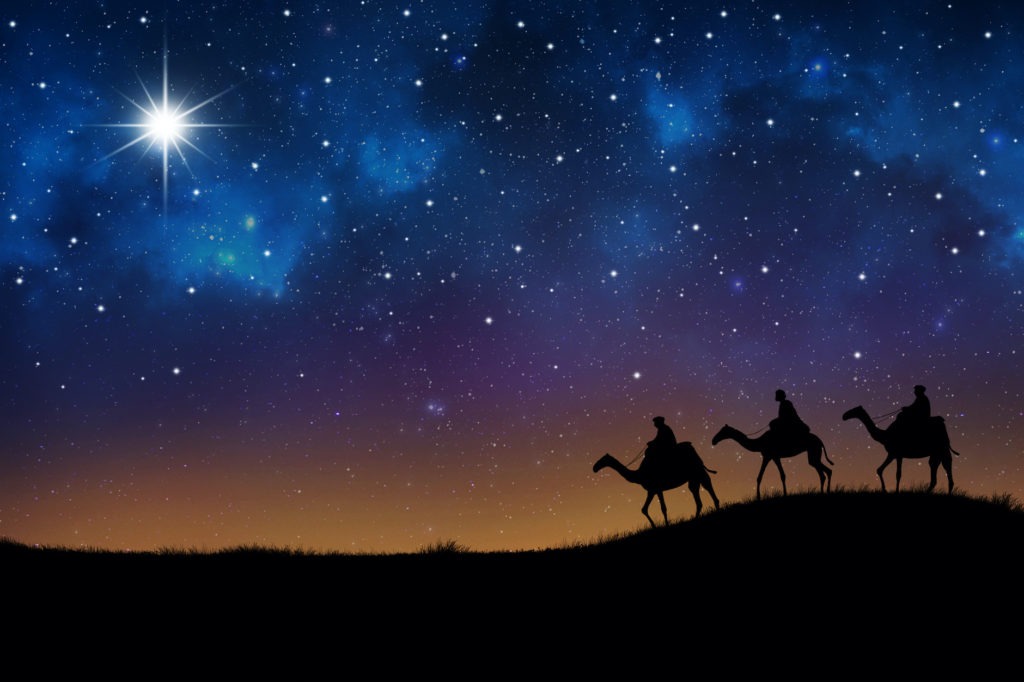
Some have suggested that these two planets might have been the legendary Star of Bethlehem. Actually, one of many theories for the Star of Bethlehem was a close conjunction between Jupiter and Saturn in 7 BC. However, in that year Jupiter and Saturn met not once but three times (in May, September, and December).
The first conjunction (in May) presumably started the Magi on their way to Bethlehem from the Far East. The middle conjunction (in September) strengthened their resolve in the purpose of their journey, while the third and final conjunction (in December) occurred just as they arrived in Judea to meet with King Herod, who sent them on to Bethlehem to “go and search diligently for the young child.”
But while single conjunctions of Jupiter and Saturn occur once every 20 years, triple conjunctions are far less frequent, occurring about once every 180 years on average. The last time was in 1981 and the next won’t happen until 2239. For the Magi, Jupiter, pacing back-and-forth with Saturn in 7 BC would have been looked upon as something unique.
In 2020, Jupiter and Saturn only had a single meeting, on December 21. Whether from an astrological point of view that one single “celestial summit” might have a been significant enough sign in the sky for the Magi to begin their trek to Judea is unknown.
Back on June 5, 1978, Mars and Saturn were separated by a similar distance, and both planets were clearly separated as viewed the naked eye.
When Will The Next Great Conjunction Occur?
The next “Great Conjunction” of 6-arcminute separation occurs on March 15, 2080.
Join The Discussion
Will you be watching for Venus and the crescent Moon on December 4, 2024?
Do you remember any special Christmas sky events?
Share with your community here in the comments below!

Joe Rao
Joe Rao is an esteemed astronomer who writes for Space.com, Sky & Telescope, and Natural History Magazine. Mr. Rao is a regular contributor to the Farmers' Almanacand serves as an associate lecturer for the Hayden Planetarium in New York City.


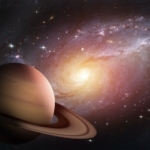

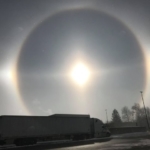
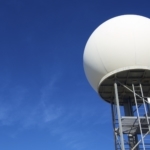
would you mind rechecking your calculations the month of may is off a few weeks it should be June , allow me to explain, The Star of Bethlehem here almost lines up perfectly with Christ’s birthday , his birthday is clearly written in the first 3 chapters of Luke if you know what your reading , if not you read right past it because it is hidden in plain sight! the first 4 verses in luke tell us it is the most accurate account of things that follow , the 5th verse gives us an exact calendar date, day , week, month and year, its not in May its the end of the 3rd week in June when Elizabeth (Marys cousin) conceives John the baptist , exactly 6 months Mary conceives Jesus “December 25th” and exactly 9 months later in September Mary gives birth to Jesus…. so it was the conjunction between Jupiter and Saturn that made up the star of Bethlehem
We are so blessed to get to see the “almost” christmas star. What a wonderful time to be alive!
Wonderful! We’re glad you got to see it, too!
I found this to send one message. Is science and happening, spiritual, tragic connected to a planetary clock called universal creation and its electro magnetic fields Is some one pushing the buttons.
Are you kidding me? How do you know when Jesus was born and or when he is returning. You need to just humble yourself and be Thankful for both events!
Yes, we do not know when Jesus will return…that’s scriptural. But we do know Jesus was born the end of September by correlating the documented conception of His cousin John.
The Star of Bethlehem could have been in September, as the birth of Christ was during the fall of the year, not in December.
What difference does that really make????
Actually the birth of Christ was in the late spring or early summer, when the taxes were being collected. The catholic church took over the pagan ritualism of the winter solstice to keep control over the people
Are you serious?! Jesus is a Jew!
Was. He was converted by John the Baptist, developed and taught “CHRISTianity to His followers. By all means, He is the Son of God.
Jesus was the son of God, crucified and rose from the dead and later ascended to Heaven to be with God . He will return again to gather all those who believe this. Jesus was never anything else so he was not in need of a conversion. He was simply baptized by John to be the example. We need to be careful saying that God was converted.
???????????? “The Sheperds Were directing the sheep to the bottom toward the shelter .
Could they hit eachother if they got closer? Could Saturn’s rings be damaged if they got to close?
?
Hi Erica, On Dec. 21st, Saturn and Jupiter will be about 455 million miles apart. To our eye, they look close but in reality, they are very far apart. They will never be close enough to disrupt Saturn’s rings- so, don’t worry. All’s well.
The Jupiter and Saturn are not in the same orbit around the sun. It is our perspective from Earth that shows them so close. They aren’t actually close at all, just lined up in their orbit to appear as one.
Please, please tell me you are joking…
They said that the two planets would be 420 million miles apart
they are still in orbits very far apart just lined up in a plane that we can see the on close together in 2D…but gravity waves are now going to tug at our magma and POP goes the supervolcano ;p